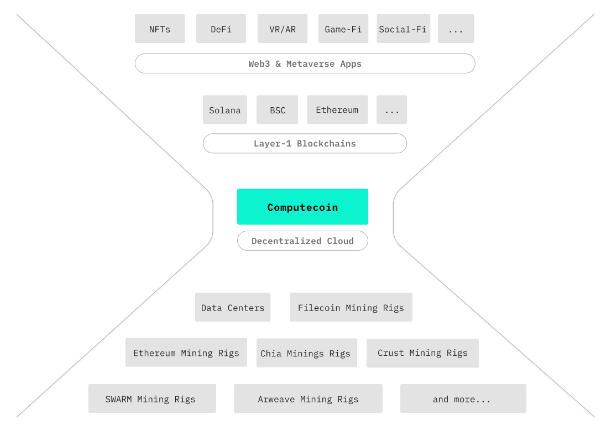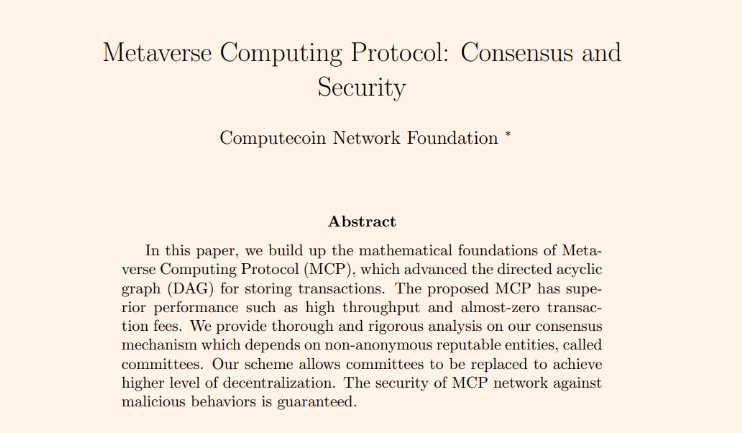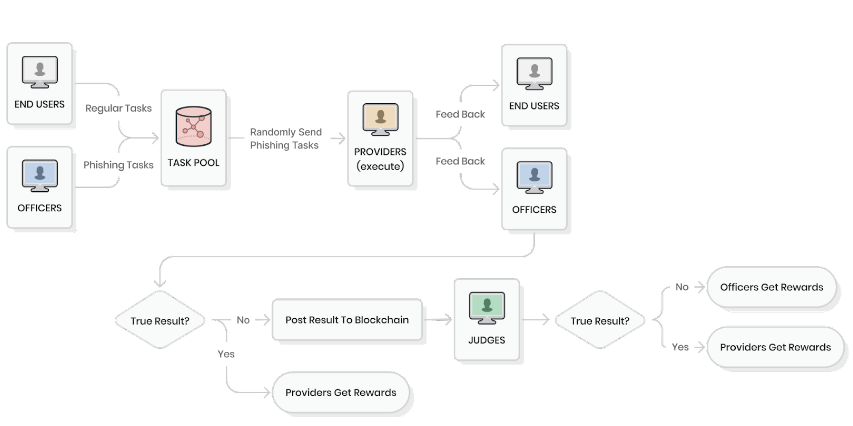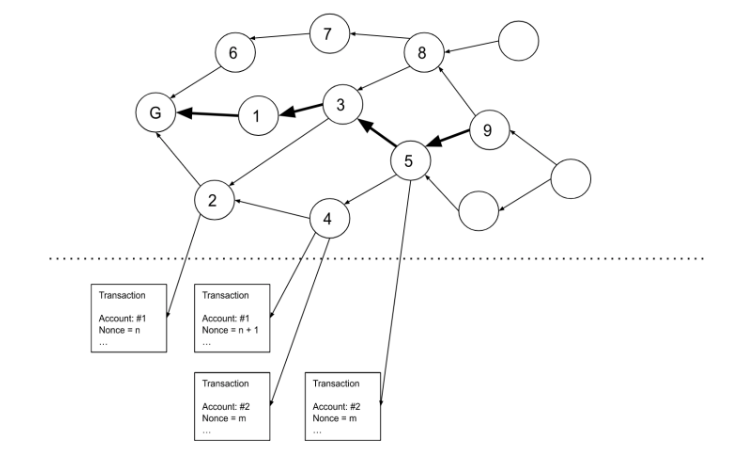first level title
1. What is Computecoin (CCN)? AWS in the Web3 Era
CCN aims to become the AWS of the Web3 era, and it uses two ideas to create a decentralized infrastructure. The first is the idea of "aggregator". With the help of this model, CCN integrates data centers with machine nodes such as Filecoin and Swarm to build a low-cost, low-latency and privacy-protected decentralized cloud infrastructure for general Web2 / Web3 and Metaverse applications provide computing and storage services.
The second is "decentralized cloud ecology", that is, to create a one-stop service for storage, computing and blockchain, and provide a Web2-compatible API interface, allowing users to easily access without a long learning cycle. This can be compared to AWS, which provides users with hundreds of services, and CCN replaces them one by one in a decentralized manner. Although the types of services are similar, the decentralized approach is more powerful, flexible, stable, affordable and less vulnerable to malicious hackers.
image description

first level title
2. About CCN's main network Metaverse Computing Protocol (MCP)
image description

Summary of CCN MCP Yellow Paper
MCP has the advantages of high concurrency, high throughput and extremely low transaction fees. In practice, the average TPS is stable at 3k/s, and the maximum can reach 20k/s; while the network transaction fee is almost zero. Excellent performance makes MCP, as a DAG-based Layer-1 blockchain, provide a network foundation for the fully distributed, high security and scalability required by future DApps and decentralized markets.
first level title
3. The overall structure of the CCN main network
From a technical point of view, the highlight that makes CCN stand out from other blockchains is that first of all it has a patented consensus algorithm called Proof of Honesty (PoH). PoH is to ensure the authenticity and integrity of computing and storage capabilities in the network. reliability.
image description

POH work demo diagram
The second is that CCN innovatively separates the consensus layer and the transaction layer, so as to jointly achieve a highly distributed network. At the consensus layer, CCN introduces the witness mechanism, and the "block" is composed of some non-anonymous well-known people or companies, called witnesses. However, to ensure a secure and fully distributed consensus, witnesses are elected from the set of validators within a predefined time period called an epoch. At each epoch, elected witnesses will determine the linear order of blocks on the DAG.
image description

Collaboration Example of Consensus Layer and Transaction Layer
After 4 years of precipitation, CCN's main network (Beta version) has been opened to the community for testing, and the code will be gradually open sourced. Technology enthusiasts can join this journey of exploration created by the Web3 infrastructure.



